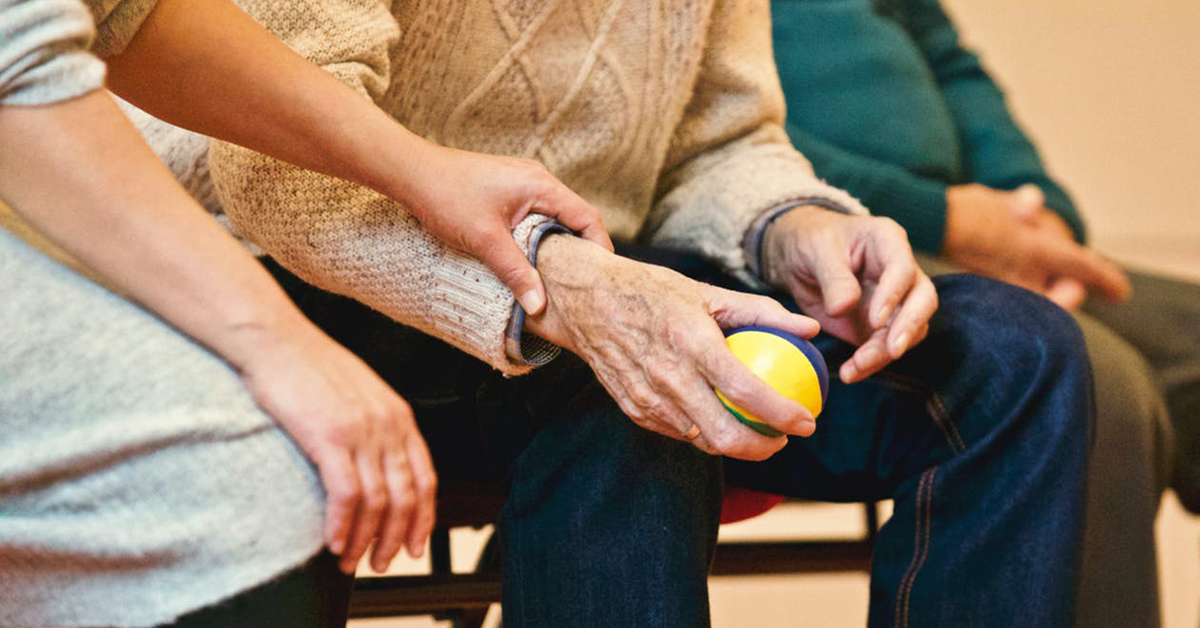
No matter one’s age, race, gender, socioeconomic status or political party, COVID-19 has impacted everyone at some level. That impact has been especially palpable for the approximately 1.3 million elderly Americans who reside in the country’s 15,600 nursing homes.
Inside these facilities, the forced isolation caused by COVID-19 disrupted daily routines and left many of the residents with higher-then-normal levels of stress, anxiety and depression. Because many of these elderly individuals lack the resources or knowledge to use communications tools such as FaceTime or Zoom, their family and friends had no way to visit them except through a facility window.
What these family members couldn’t see as they peered through their loved one’s glass frame was the mental toll the pandemic was taking on the facility’s health care staff.
To better understand this toll, Ashish Sarangi, M.D., recently conducted research into the mental health consequences of COVID-19 geriatric care in a nursing home setting. His research, “A Descriptive Study Evaluating the Impact of COVID-19 on Delivery of Care and Mental Health of Geriatric Nursing Home Staff,” was published in the April issue of the American Journal of Geriatric Psychiatry. The study also was presented in March during the honors alumni session at the American Association of Geriatric Psychiatry's annual meeting.

Sarangi, co-chief psychiatry resident at the Texas Tech University Health Sciences Center (TTUHSC) School of Medicine, conducted his research at a nursing home facility in Lubbock, Texas using an online survey that was distributed to staff physicians, registered nurses and LVNs.
“What we found is that there was a lot of mental health impact on the staff members, and the reasons were anywhere from working through optimally long hours to they didn't have enough PPE (personal protective equipment) available,” Sarangi said. “They're fearful of contracting COVID and taking it home to their families and there was just, overall, a lot of stress and negative mood as well.”
Many of the facility’s staff members did indeed contract COVID-19, requiring them to quarantine at home while others worked extended shifts to cover the time missed. The stress of working longer shifts was compounded by the lack of PPE.
“That was very challenging for them,” Sarangi said. “Also, there were no visitors allowed either for the patients or staff members. It was pretty much a lockdown facility for 10 to 12 hours a day and they didn't have any kind of mental support; there was no counseling or anything like that going on.”
The facility employed telemedicine and other electronic platforms to help offset staff concerns about contracting the virus and ease the sense of isolation among staff and residents. However, Sarangi said, many residents and staff found the use of technology unhelpful. Most residents simply weren’t able to successfully navigate the platforms and staff found that it added to their sanitation burden. The more equipment the technology required, the more time they had to spend sanitizing it before its next use.
In addition, the same stress that was causing mental health issues for staff and residents also was affecting their physical health. Sarangi said this is important because stress, no matter its source, can predispose people to cardiovascular conditions such as heart attacks and strokes.
“Even if you're perfectly healthy or don’t have any pre-existing conditions, stress can also lead to diabetes and actually increase your risk for infections like COVID-19,” Sarangi added. “And if you are chronically stressed, it can affect your immune system and predispose you to COVID-19 as well.”
Several recent studies have suggested that the pandemic has not yet produced an increased suicide rate, while others say it’s still too early to know for sure. Though the risk of suicide among nursing home staff and residents was not part of his study, Sarangi thinks those rates will increase if the appropriate resources are not available.
“There's a huge risk factor for suicide right now because people are losing loved ones and they're losing their jobs and means of living,” Sarangi explained. “That definitely can drive people to suicide.”
To help reduce the risks, Sarangi said it’s important to stay in contact with friends and family and look for clues that could help identify someone in distress. For instance, if somebody suddenly stops showing up to work frequently, that could be an indicator of depression and being overwhelmed. Other red flags include a decrease in performance, crying while at work or making general statements about suicide or self-harm.
If someone does appear to be having mental health issues, Sarangi suggests helping them find resources such as community health centers, suicide hotlines or employee assistance programs. Sometimes, he said, helping can be as simple as reaching out and asking someone how they’re doing could allow someone to open up to you and make a positive impact. In the end, the most important thing is to make sure they know there is help available.
“I just think, especially in a time like this, we need to focus on mental health,” Sarangi said. “Mental health needs to be a priority because people are just not going to be functional if everybody's depressed or anxious or stressed out. They’re not going to be who they are 100% and there is going to be an increased risk for suicide.”
The availability of vaccines have eased some of the stress related to COVID-19, but Sarangi said staff still work under a cloud of fear that will likely remain until the pandemic ends. They worry every day about whether they’ve contracted the disease, or worse, passed it on to a family member at home or to an elderly nursing home resident.
“It's like walking into a fire sometimes because some of these long-term care facilities, at least in the heat of the pandemic, they were pretty much hotspots for COVID-19,” Sarangi emphasized. “It’s something that we don't really think about in Lubbock, but it also happens here a lot. We still have a lot of nursing homes and long-term care facilities here and I think they need the mental health support; they need resources. I think that would be the main take-home point of this study.”
